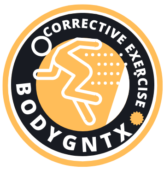Mastering Posture Correction in Bent-Over Workouts: A Deep Dive into Biomechanics with Dr. Neeraj Mehta’s 50,000 Hours of Expertise
Greetings, fitness enthusiasts! Dr. Neeraj Mehta here, delving into the intricacies of mastering posture correction in bent-over workouts. With over 30 years of expertise and a PhD in Human Biomechanics and Alternative Medicine, I’ve dedicated over 50,000 hours to refining techniques, especially in working with sports professionals, fitness enthusiasts, and those with unique needs.
Understanding Joint Mechanics:
Let’s dissect the biomechanics of joint movement during bent-over exercises. In a deadlift, for instance, the hip hinge is paramount. The hip joint is a complex structure, and my extensive study focuses on optimizing its mechanics to safeguard the lower back from undue stress. The science lies in finding the optimal hip hinge angle that ensures maximal force transmission while minimizing the risk of injury.
Optimizing leverage enhances force production while minimizing stress on vulnerable structures, ensuring biomechanically efficient bent-over workouts
neeraj mehta
Optimizing Muscle Engagement:
The symphony of muscles involved in bent-over workouts, from the erector spinae to the latissimus dorsi, requires orchestrated engagement. Through a scientific lens, I guide you in achieving a harmonious balance, ensuring each muscle group contributes efficiently without overburdening others. This approach is rooted in studies on muscle activation patterns during compound movements.
Preserving Spinal Alignment:
Maintaining a neutral spine is a critical aspect often backed by research on spinal biomechanics. I emphasize a holistic approach, incorporating findings on the impact of foot positioning, gaze fixation, and core engagement in preserving optimal spinal alignment. Studies on spinal loading guide the development of strategies to prevent excessive flexion or extension.
Leverage and Load Distribution Mastery:
Biomechanics principles dictate that optimizing leverage enhances force production while minimizing stress on vulnerable structures. Studies on load distribution during compound movements inform my coaching approach. Keeping the load close to the body’s center of mass reduces the moment arm, decreasing torque on the spine and promoting a biomechanically efficient workout.
Synchronize breath with movement to enhance stability and support spinal integrity, a key principle grounded in diaphragmatic breathing and biomechanical research
neeraj mehta
Breathing Techniques as a Stabilizing Force:
The role of breathing in stabilizing the core is substantiated by research on diaphragmatic breathing. I integrate evidence-based breathing techniques seamlessly into bent-over exercises. The synchronization of breath with movement not only enhances stability but also supports spinal integrity, reducing the risk of postural deviations.
Practical Application for Posture Correction:
The practical aspect of my coaching involves real-time corrections informed by biomechanical research on movement patterns. I guide you through recognizing and rectifying subtle deviations, preventing the reinforcement of faulty motor patterns. This approach aligns with studies emphasizing the importance of kinematic feedback in motor skill acquisition.
Gradual Progression Toward Mastery:
Studies on the principle of progressive overload underpin my philosophy of gradual progression in mastering bent-over exercises. By gradually adapting to increased demands, your body undergoes physiological changes aligned with the science of biomechanics, ensuring long-term postural health.
Conclusion:
In conclusion, the mastery of posture correction in bent-over workouts is not just an art but a science. As your biomechanical guide, I merge scientific principles with practical application, shaping your approach to these challenging exercises. Let’s embark on this journey together, where science meets sweat, and we redefine the way you perceive and perform bent-over workouts!
Here are some science-based links that delve into the field of biomechanics and its application in fitness:
- American Council on Exercise (ACE):
- National Academy of Sports Medicine (NASM):
- PubMed Central – Biomechanics Journals:
- ScienceDirect – Biomechanics Research:
- ResearchGate – Dr. Neeraj Mehta’s Publications:
